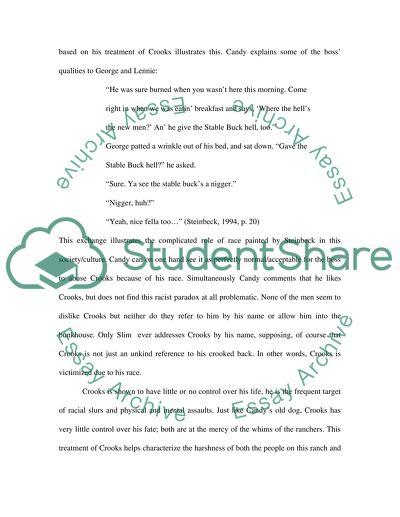Cite this document
(“Steinbeck's 'Of Mice and Men' Book Report/Review”, n.d.)
Steinbeck's 'Of Mice and Men' Book Report/Review. Retrieved from https://studentshare.org/miscellaneous/1515598-steinbecks-of-mice-and-men
Steinbeck's 'Of Mice and Men' Book Report/Review. Retrieved from https://studentshare.org/miscellaneous/1515598-steinbecks-of-mice-and-men
(Steinbeck'S 'Of Mice and Men' Book Report/Review)
Steinbeck'S 'Of Mice and Men' Book Report/Review. https://studentshare.org/miscellaneous/1515598-steinbecks-of-mice-and-men.
Steinbeck'S 'Of Mice and Men' Book Report/Review. https://studentshare.org/miscellaneous/1515598-steinbecks-of-mice-and-men.
“Steinbeck'S 'Of Mice and Men' Book Report/Review”, n.d. https://studentshare.org/miscellaneous/1515598-steinbecks-of-mice-and-men.


